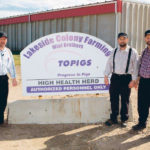Producers are urged to disinfect feed ingredient packaging and also find a way to disinfect the pallets or at least get them off the ground
When Dr. Egan Brockhoff drove to the Lethbridge Exhibition where he would speak to hog producers about biosecurity, he noticed a one-ton pickup loaded with a full mini-bulk bag sitting on a pallet. That bag became an object lesson during his talk on “wartime” biosecurity as Alberta producers acknowledge that porcine epidemic diarrhea is active […] Read moreStories by Barb Glen
New fly product a first for Canada
CAYLEY, Alta. — A fly control product incorporated in bovine mineral, in use in the United States for about 17 years, is now available in Canada. Altosid insect growth regulator is marketed by Cargill and designed to treat horn flies in manure. “It was registered in May of 2018 so we were already into fly […] Read more
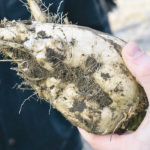
Alta. sugar beet growers want neonics to remain
Alberta sugar beet growers are asking the Pest Management Regulatory Agency to retain the use of neonicotinoids as it re-evaluates the use of the pesticides in Canada. They have prepared a letter for Alberta MPs indicating concern over the PMRA’s consideration of a complete ban on neonics that are said to harm bees and aquatic […] Read more
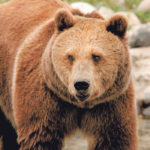
Bear awareness programs pay off in Alberta
The province has funded research to determine grizzly population, but surveys, relying heavily on DNA, are not complete
CLARESHOLM, Alta. — Bear-proof bin doors, electric fencing and regional containers to store dead livestock have reduced landowners’ problems in southern Alberta related to unwelcome visits and damage from grizzly bears, wolves and other large carnivores. The Communities and Carnivores program, organized through the Waterton Biosphere Reserve, has statistics on reported problems in four municipalities: […] Read more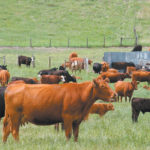
Cattle with parasites graze less efficiently
Research has found that treating cattle for worms can potentially improve their productivity in the pasture
Cattle infected with parasites spend less time grazing and more time idling in the pasture, leading to lower weight gains compared to animals treated to eliminate parasites. Though the study led by Andrew Forbes was published in Veterinary Parasitology in 2004, its findings emphasize the benefits of parasite treatment in cattle to potentially improve productivity. […] Read moreGrowers want piling process to be faster
Long lineups of trucks loaded with sugar beets can be a common sight in southern Alberta at piling stations during fall harvest season. Sugar beets are delivered by truck to several stations where they are weighed and piled. Drivers can face long waits to unload during peak times and the Alberta Sugar Beet Growers board […] Read more
Ranchers hopeful for changes to compensation rates
CLARESHOLM, Alta. — Alberta ranchers can get compensation when a grizzly bear, black bear, wolf or cougar kills one of their animals, but the path to obtaining that money is not always smooth. Has the type of predator that killed the animal been confirmed? Were the remains inspected by a Fish and Wildlife officer? Was […] Read more
Worms can survive winter
Conventional thought was that common species of roundworm cattle parasites are killed during the cold prairie winters. Not so, it appears. Agriculture Canada research scientist Doug Colwell says studies show about five percent of common roundworm species survive winter and are available to be ingested by cattle as soon as turnout in spring. He is […] Read more
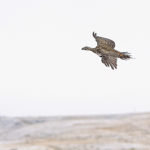
Sage grouse recovery project sees first spring
The Calgary Zoo released 66 greater sage grouse at two locations last fall: one in Saskatchewan and the other in Alberta
Biologists plan to keep a close watch this spring on 66 wild newcomers to grasslands in southwestern Saskatchewan and southeastern Alberta. In fall 2018, the Calgary Zoo released 66 greater sage grouse at two locations: Grasslands National Park in Saskatchewan and a 150-acre property southwest of Cypress Hills Provincial Park that is owned by the […] Read more
Feds take African swine fever action
Extra sniffer dogs will look for illegal meat products and the CFIA makes zoning plans in case disease found here
There will be more dogs sniffing luggage and passengers at Canadian airports in coming years as Agriculture Canada and the Canadian Food Inspection Agency seek to block African swine fever. Federal Agriculture Minister Marie-Claude Bibeau announced plans March 14 to add 24 sniffer dogs to the 15-dog complement already on the job. The increase will […] Read more

